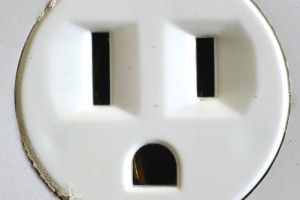Tip Tuesday!
This Week’s Topic: Appliances
Liz Scanlon, Marketing Intern
Photo by grendelkhan https://creativecommons.org/licenses/by-sa/2.0/legalcode changes made
Appliances can be a huge portion of your home energy bill. Here are some tips to keep your wattage down:
1) Slay the Vampires in Your House
Though your appliance may not be in use, products that employ a “stand-by” mode (DVD players, computers, gaming devices) use up energy even though they’re turned “off”. Energy-sucking gadgets have earned the nickname “Vampire Appliances” for their ruthless consumption, and they’re something to be avoided. Yet we use vampire appliances more than ever. According to Forbes, the average home has 30 vampire appliances, and they account for 4% of our nation’s annual energy consumption (keep in mind a fridge, which does much more work, is 8%). When not in use, be sure to unplug your appliances or use an energy-efficient powerstrip. An energy-efficient powerstrip is like a garlic stake in a vampire appliance’s heart. It works by using a sensor to detect the energy output needed by a product. If your device reaches a certain low-level output, say, on stand-by mode, the strip will cut off all power to the device. The strip also has outlets that stay permanently on– this way your DVR will still record Cosmos, even if the TV is shut down.
2) EnergyGuides Don’t Speak the Whole Truth
That isn’t to say EnergyGuides don’t give you accurate information, they certainly do. What people often misinterpret though is the mere presence of an EnergyGuide on an appliance. When shopping, you may see that yellow tag and the word “ENERGY” and think it means the product is designed to save you watts. In actuality, most large appliances (ovens and dryers excluded) have an EnergyGuide: The tags are merely a tool for comparison, not a guarantee of savings. They’re useful, as each guide states the energy ratings for a product so consumers can see what’s right for them, but they don’t indicate greener technology. The reason you only see this guide on some brands is because the guides are sometimes concealed. If you’re looking for certified efficient appliances, it’s best to look for EnergyStar products, which have earned EPA certifications for going far beyond federal efficiency standards.
3) More Expensive is Less Expensive
Consumers may never consider efficient appliances for the sole reason that they are more expensive. For good reason, we often shy away from what appears to be a pretty pricey model, but this might be the wrong approach. When purchasing a major appliance, think of it as you would when purchasing a car: consider the initial price, cost of maintenance, and cost of operation. A product might be cheap in the shopping cart but a complete lemon once you get it home. Furthermore, it could prove to be inadequate when it comes to careful energy consumption. The upfront costs of an energy-efficient model are often worth the long-term utility bill savings.
4) 20 Years Old is Too Old
It’s true, your air-conditioner probably couldn’t rent a car or order a glass of chianti, but in the world of appliances, it may be old enough for retirement. Today, products manufactured in 1994 or prior lack many of the qualities that are now federally required in newer models. In the past 5 years, the Obama Administration has passed or updated 24 different appliance standards for over 30 products. This means your 25 year old A/C unit is woefully behind the times– it’s the equivalent of using a walkman for listening to music, but in a way that’s more detrimental to your bank account. The relatively poor efficiency ratings that older models possess only serve as an ineffective way to cool your home and an effective way to drain your income.
5) Dryers Suck (Energy)
In all honesty, there’s nothing I love more than a blanket that just came out of the dryer. So soft. So warm. And yet, I often feel disdain for using the dryer. It’s understandable that a refrigerator might need that much energy, it’s running all the time. But there’s no reason you should be spending so much energy (and money) to power a machine that you probably only use a few times a week. It’s still reasonable that one would want a dryer, with big families, cold months, and a lack of drying space as big supporters of the cause. Since this is so, try and opt for the most energy efficient model the next time you’re shopping for a dryer. However, if you happen to have a warm day and a load of laundry, why not let the sun’s natural heat dry your clothes? Bonus: no lint trap.









